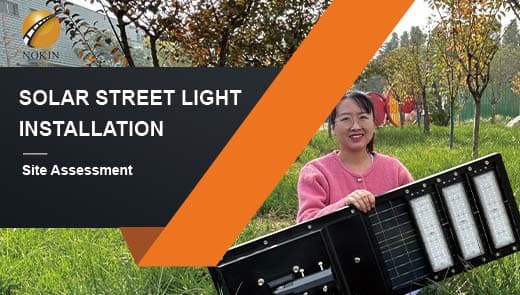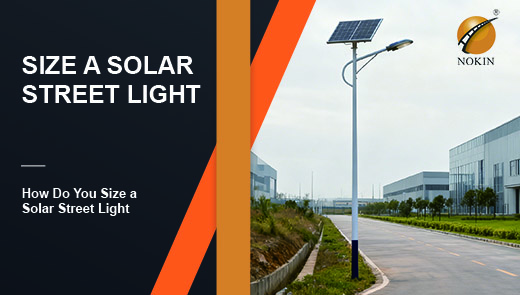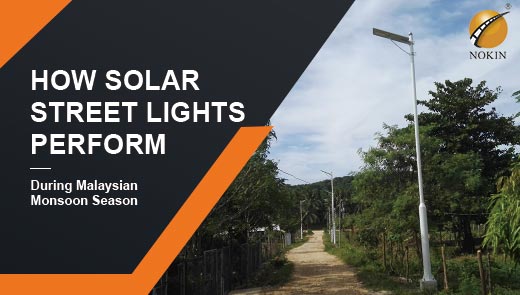Solar Street Light Installation Site Assessment
In solar street light projects, site assessment is the core link that determines success or failure. It directly affects the component selection, installation layout, project cost of solar street lights, and even the long-term reliability and service life of the system. If the site assessment is skipped, the project is very likely to fall into the predicament of "insufficient battery power causing lights to go out at night", "obstructions blocking sunlight and reducing power generation efficiency", and "frequent maintenance in the later stage and soaring costs". According to industry data, for solar street light projects that have not undergone site assessment, the probability of operation and maintenance failures will increase by more than 40%. Therefore, whether it is urban roads, rural roads or park lighting projects, "assess first, then implement" is the golden rule for solar street light projects.
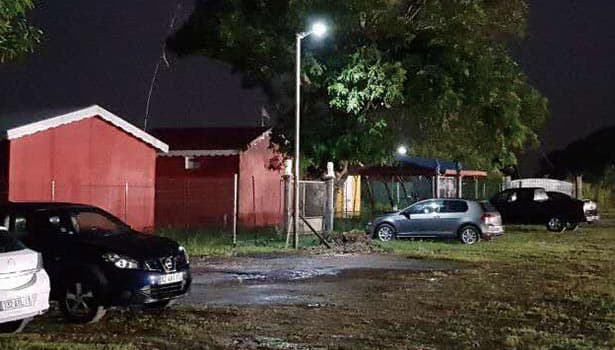
Why Is It Necessary to Conduct A Site Assessment Before Installing Solar Street Lights?
Optimize the Component Configuration of Solar Street Lights
Obstructions such as trees, high-rise buildings and billboards will directly reduce the effective light-receiving time of solar panels. If the occlusion situation is not evaluated in advance, it may lead to the power generation of the solar module being lower than the designed value, which in turn causes the solar street light battery to be undercharged and unable to meet the night lighting requirements. Through site assessment, the shading period and Angle can be accurately calculated, and based on this, the power of solar panels and battery capacity can be optimized - for example, in semi-shaded areas, solar panels with higher conversion efficiency can be selected to avoid resource waste caused by "a big horse pulling a small cart" or "a small horse pulling nothing".
Meet the Lighting Standards of the Venue
Solar street lights for different scenarios have clear requirements for illuminance, uniformity and pole height: the average illuminance for main roads should be ≥20lux, for secondary roads ≥10lux, and for residential areas and sidewalks ≥5lux (refer to the "Urban Road Lighting Design Standard"). If the site assessment is not conducted and the parameters of street lights are blindly selected, problems such as "insufficient brightness causing safety accidents" or "excessive brightness resulting in energy waste" may occur. For instance, if rural roads are equipped with high-power solar LED street lights according to the standards of main roads, it will lead to an increase of more than 30% in project costs and will not meet the actual needs.
Reduce Long-term Maintenance Costs
Site assessment can detect potential hazards in advance: for instance, if the foundation in soft soil areas is not reinforced, it may cause the solar street light poles to tilt. If dust-proof solar panels are not chosen in a dusty environment, it will increase the frequency of cleaning and maintenance costs. Solar street light projects that have undergone site assessment can reduce the average annual maintenance cost by 25% and shorten the fault repair time by 60%. Meanwhile, the assessment data can also provide a basis for later operation and maintenance. For instance, waterproof battery boxes can be pre-configured in rainy areas to prevent battery short circuits and damage.
Provide Data Support for Construction and Approval
Before construction, the data such as "underground pipeline location" and "terrain slope" obtained through site assessment can prevent damage to water pipes and cables during excavation. And data such as "road category" and "lighting indicators" are the core materials for applying to the urban management department for construction permits. If there is a lack of assessment data, it may lead to the suspension of construction for rectification or delays in the approval process, thereby increasing the project's time cost.
Preparations Before the Site Assessment of Solar Street Lights
Clarify the Project Goals and Design Criteria
First, confirm the core requirements with the owner to avoid rework later
Functional requirements: Is the solar powered street lightin constant light mode or intelligent sensing (human body sensing/light control)?Lighting indicators: How long should continuous lighting be required at night (8 hours / 12 hours / 16 hours)? What is the minimum illuminance requirement?
Budget range: The upper limit of the cost for a single set of solar street lights, does it include the cost of later maintenance?
Collect Geographical and Climatic Data
These data directly determine the component selection for solar led street lights:
Geographical location: The longitude and latitude where the project is located (affecting the solar altitude Angle and thus the installation Angle of the solar panels);Sunshine resources: Annual average sunshine volume (unit: kWh/m²/day), which can be queried through the National Meteorological Science Data Center;
Extreme weather: The lowest temperature in winter (whether low-temperature resistant batteries need to be selected), the highest temperature in summer (whether heat dissipation design is needed), the average annual rainfall (whether components with a waterproof rating of IP67 or above are needed);
Special environments: Wind speed (affecting the wind-resistant design of lightposts), dust fall (affecting the cleaning frequency of solar panels).
Obtain the Basic Information of the Venue
Site map/Road plan: Mark the planned installation locations of street lights, clearly define the road width and the scope of sidewalks;Underground facility information: Contact the municipal department to obtain the layout diagrams of underground water pipes, cables and gas pipelines to avoid construction conflicts;
Land ownership certificate: Confirm whether the installation area belongs to municipal roads, residential property management or private land to avoid property rights disputes.
Core Project for On-site Investigation of Solar LED Street Light Installation
Solar Energy Resources and Occlusion Assessment
Sunshine duration measurement: Based on the local average annual sunshine data, focus on analyzing the duration of sunlight on the Winter Solstice (the day with the shortest sunshine in the Northern Hemisphere). If the effective sunshine on the Winter Solstice is less than 4 hours, the capacity of solar panels needs to be increased.Obstruction inspection: Mark trees, buildings, utility poles and other obstruction sources on-site, record the obstruction time periods (such as no obstruction from 9 a.m. to 3 p.m., and obstruction at other times) and angles, and it is recommended to take photos for archiving.
Special circumstances: If the site has "intermittent shading" (such as no shading during the deciduous period of street trees but shading during the flourishing period), components should be designed based on the "most unfavorable conditions".
Illuminance and Optical Requirements of Solar Street Lights
The lighting indicators of solar powered street lights are determined according to the road category, as shown in the following table:
|
Road Category |
Average Illuminance (lux) |
Uniformity (Minimum / Average) |
Suggested Pole Height (m) |
Pole Spacing (m) |
|
Main road |
≥ 20 |
≥ 0.4 |
8–12 |
30–40 |
|
Secondary arterial road |
≥ 10 |
≥ 0.3 |
6–8 |
25–35 |
|
Residential area |
≥ 5 |
≥ 0.2 |
4–6 |
20–30 |
|
Sidewalk |
≥ 3 |
≥ 0.2 |
3–5 |
15–25 |
On-site, an illuminance meter (Lux meter) can be used to measure the current light environment. If the current illuminance is lower than the target value, the power or installation density of the solar LED street lights needs to be adjusted.
On-site Environment and Terrain
Terrain analysis: In flat areas, prefabricated foundations can be used. In areas with a slope greater than 15°, the foundations need to be reinforced to prevent the lightposts from tilting.Soil quality inspection: The foundation design for sandy soil, clay, and rock layers is different - for sandy soil, the foundation burial depth needs to be increased, and for rock layers, drilling construction is required.
Groundwater level: In areas with a high groundwater level (such as wetlands and riverbanks), battery boxes with better water resistance should be selected to prevent rainwater from flowing back in.
Wind Load and Wind Resistance Design
Wind speed data: Query the maximum wind speed that occurs once in 50 years in the local area (for example, the wind speed in coastal areas often reaches 10-12 levels, while in inland areas it is mostly 6-8 levels);Wind resistance calculation: Based on the height of the lightpost and the windward area of the solar panels, calculate the wind load - for example, a 10-meter-high lightpost with a solar panel area of 1.5 square meters needs to withstand approximately 200 kilograms of horizontal force under a 10-level wind.
Design Scheme: In areas with strong winds, it is recommended to choose the combination of "short poles + small area solar panels", or use "conical lightpoles" (which have stronger wind resistance), and add counterweights to the foundation (such as pouring concrete counterweight blocks).
Power Supply and Grid Connection
Off-grid/grid-connected options: Pure off-grid solar street lights are suitable for areas without mains power access, while hybrid systems (solar energy + mains power backup) are suitable for regions with frequent rainy days.Grid connection conditions: If grid connection is required, record the location and distance of the nearby municipal power interface (an access distance exceeding 100 meters will increase the cost of cables), and consult the grid connection approval process of the power department.
Maintenance and Security Considerations
Construction accessibility: Can large equipment (such as cranes) enter the site? Small construction equipment should be selected for narrow alleys.Maintenance space: At least 1 meter of maintenance space should be reserved at the bottom of the lightpost, and the installation position of the battery box should be convenient for opening and maintenance.
Anti-theft and anti-vandalism: In remote areas, it is recommended to choose battery boxes with anti-theft locks and use anti-disassembly bolts at the connection points of lightposts.
Lightning protection and grounding: In areas prone to thunderstorms (such as mountainous regions), grounding devices should be installed at the bottom of the lightposts, with a grounding resistance of no more than 10Ω.
Regulations, Permits and Community Factors
Local regulations: Confirm compliance with the "Code for Construction and Acceptance of Urban Road Lighting Engineering". The height and style of lightposts may be restricted in historical building protection areas.Licensing process: Apply to the municipal department for "Road Occupation Permit" and "Nighttime Construction Permit". For community projects, the consent of the property management and the owners must be obtained.
Community communication: To prevent the installation location of solar powered street lights from affecting residents' lives (such as direct light on Windows), the Angle of the lighthead can be adjusted or anti-glare lights can be selected.
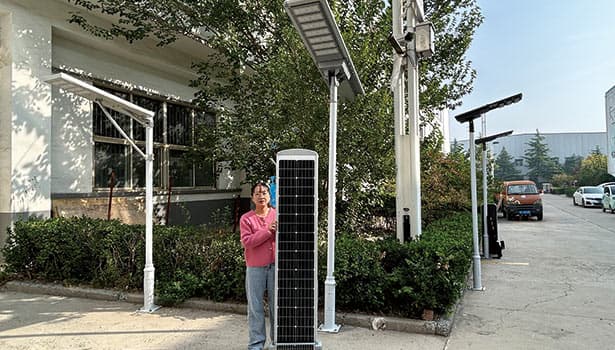
Recommended On-site Tools and Measurement Methods for Use
|
Tool Name |
Purpose |
Usage Tips |
|
Illuminance meter (Lux meter) |
Measures existing nighttime illuminance to verify lighting performance |
Keep the instrument level during measurement and avoid direct strong light |
|
Portable solar radiometer |
Measures on-site solar irradiance intensity |
Calibrate/measure between 10 a.m.–2 p.m., when sunlight is most stable |
|
GPS / Total station |
Locates coordinates of light poles, calculates pole spacing, records latitude and longitude for mapping |
Ensure each pole is recorded accurately to support later map marking |
|
Soil sampler |
Identifies soil type and supports foundation design |
Sampling depth should be ≥1.5 m (foundation depth is usually 1/10 of pole height) |
|
Mobile form (e.g., Excel) |
Records site data point by point; organizes photos and notes |
Upload photos in real time and classify them by “light pole number” to avoid data confusion |
Data recording template
|
Number |
Longitude |
Latitude |
Pole Position Type |
Road Category |
Target Illuminance (lux) |
Daily Avg. Irradiance (kWh/m²) |
Shielding Description |
Soil |
Pile Foundation |
Suggested Grid-Connected / Off-Grid |
Construction Remarks |
|
1 |
116.4° |
39.9° |
Both sides of the main road |
Main road |
15–17 (blocked points) |
— |
West side blocked by three-story buildings |
Clay |
Precast concrete foundation, 1.2 m deep |
Off-grid (avoid underground cables at 0.8 m depth) |
Avoid underground cables when trenching |
|
2 |
116.4° |
39.9° |
Residential area beside sidewalk |
Sidewalk / Residential |
6 |
5.0 |
Unobstructed |
Sandy soil |
Expansion foundation, 1.0 m deep |
Off-grid; anti-glare needed due to nearby residences |
Ensure anti-glare design |
|
3 |
116.5° |
39.8° |
Central section of secondary arterial road |
Secondary arterial road |
12 |
4.8 |
Street trees on the north side |
— (rock present) |
Borehole foundation with slight rock, 1.5 m deep |
Hybrid system; needs municipal grid connection (50 m away) |
Coordinate municipal connection |
FAQ on Site Assessment of Solar Street lights
What should I do if there is severe obstruction?
Position adjustment: If the obstruction is a temporary building, the lightpost can be moved to an unobstructed area.Raise the solar panels: Increase the installation height of the solar panels by 2-3 meters to avoid low-level obstructions (such as trees);
Technical solution: Select "back-to-back double-panel solar panels" (capable of receiving light from both sides, increasing power generation by 20%), or adopt "solar + municipal power hybrid power supply", switching to municipal power on rainy days.
Extreme situation: If the overall obstruction rate exceeds 60%, it is recommended to abandon the pure solar energy solution and switch to "city power complementary street lights".
How do dusty or high-temperature environments affect solar street light systems?
Dusty environment: Dust covering solar panels can reduce power generation (a 1mm thick dust cover can lower power generation by 15%). Solution: Choose dust-proof coated solar panels and increase the cleaning frequency once a quarter.High-temperature environment (maximum temperature in summer > 35℃) : The lifespan of ordinary lead-acid batteries is shortened under high temperatures (from 3 years to 1.5 years). Countermeasures: Switch to high-temperature resistant lithium iron phosphate batteries (LiFePO4), add heat dissipation holes to the battery box, or install it in a cool place.
How to choose light poles in areas with strong winds?
Pole type selection: Give priority to conical lightpoles (which have 30% stronger wind resistance than cylindrical lightpoles), and avoid choosing light poles with overly long cantilevers (to reduce the windward area).Height control: In areas where wind speed exceeds level 10, the height of the lightpost shall not exceed 8 meters.
Foundation reinforcement: Adopt "gravity foundation" (the weight of the concrete counterweight blocks is ≥ three times the total weight of the lightpost), or add ground anchor cables (suitable for open areas).
Solar Street light Site Assessment Report
The standard site assessment report should include the following contents:
Project Overview: Project Name, Location, Area, Road Type;
Evaluation data: Sunlight exposure, occlusion analysis, illuminance requirements, soil quality report (with photos);
System selection suggestions: solar panel power, battery capacity, light post parameters, off-grid/grid-connected schemes;
Bill of quantities: Number of street lights, type of foundation, length of cables, requirements for construction equipment;
Budget estimation: Equipment cost, construction cost, operation and maintenance cost (by year);
Risk List: Potential risks (such as intensified occlusion, cultural relic protection) and countermeasures;
Attachments: On-site photos, underground pipeline diagrams, illuminance measurement record sheets.

Site assessment is not an "extra step", but a prerequisite for the solar street light project to "save money, be worry-free and succeed" - skipping the assessment may lead to equipment waste, construction rework and a sharp increase in operation and maintenance costs. Conducting a thorough assessment can precisely match demands and reduce unnecessary costs by more than 30%. If you are preparing for a solar street light project, you can leave your contact information. We will get in touch with you as soon as possible to provide you with professional services and suggestions to help your solar street light project be implemented efficiently!

